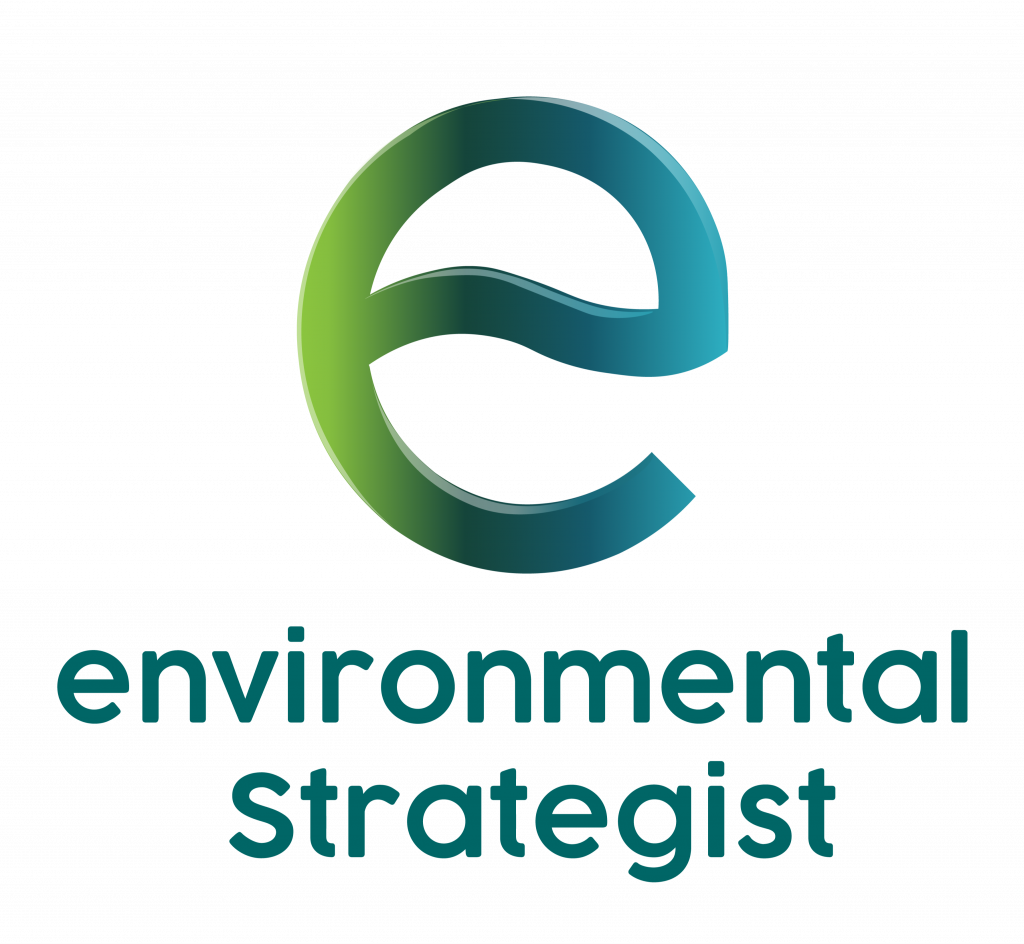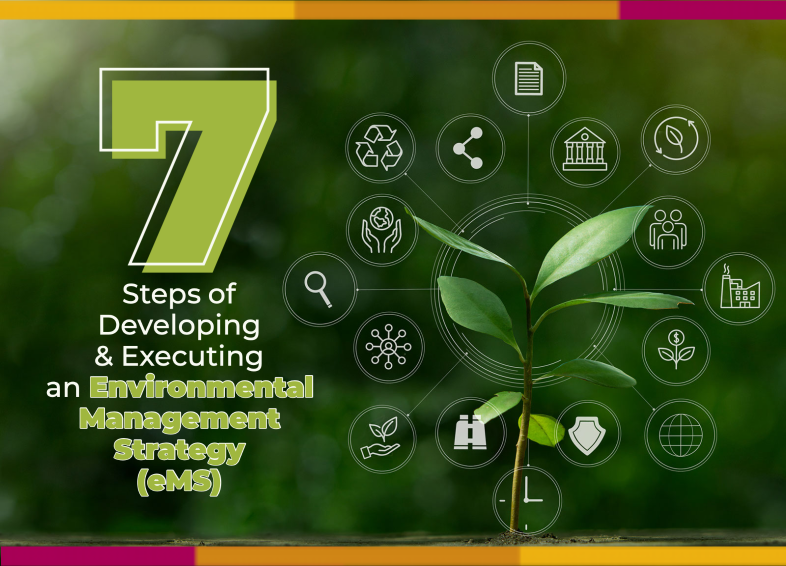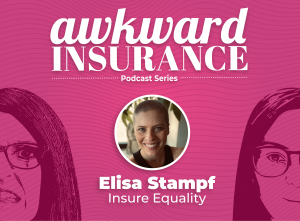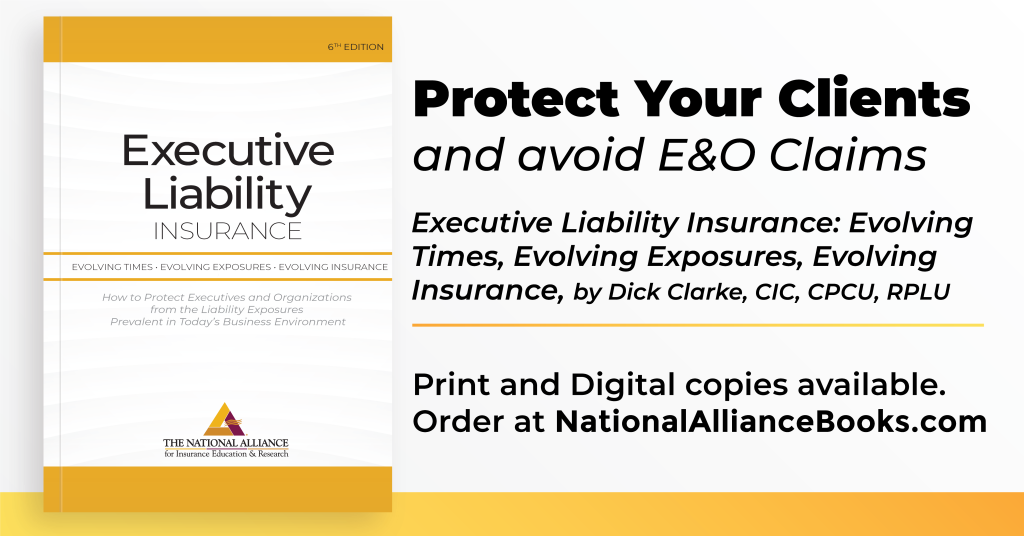
By Chris Bunbury, eS
Chris Bunbury is an Environmental Strategist and President of Environmental Strategist, Inc. (ESI), located in LeLand, Michigan. He graduated from Michigan State University with a Bachelor of Science degree in Natural Resources. In 1988, he worked in the commercial property and casualty insurance industry as a retail commercial insurance producer. As the environmental insurance industry evolved, it was a natural transition for Chris to move into this evolving field.
What Is Your Environmental Footprint?
You can’t be in business without being impacted by environmental issues, exposures, liabilities, investments. But you can use them as a competitive advantage. In order to minimize risk, maximize value and optimize performance while driving your growth and profits, follow the seven steps outlined in this article to discover your business’s environmental footprint and develop your Environmental Management Strategy.
What is an Environmental Management Strategy (eMS)?
An eMS is an evolving “team sport” strategy that ensures you gather necessary competitive environmental intelligence about your business.
Benefits of an Environmental Management Strategy
An eMS identifies a starting point from which to build a sustainable business. The better defined your starting point, the more control you will have. An eMS gives businesses the ability to measure and report your environmental progress to employees, government, stakeholders, neighbors, and customers.
Who should be on your eMS Team?
The makeup of your eMS TEAM can vary but generally be comprised of key employees, legal counsel, risk manager, insurance agent, accountant, financial institution representative, realtor, and environmental service providers. Your eMS TEAM primarily interacts with upper management to identify lower-level organizational tasks to be performed by appropriate TEAM members.
The foundation of your eMS is the environmental efficiency evaluation (eee). Completing the eS eee questionnaire gives you your environmental baseline by identifying direct and indirect environmental issues.
Developing & Executing an eMS
Step #1: Understand Your Clients and Vendors
Client’s and vendors can create indirect environmental liabilities. It’s critical to know who you are doing business with and why. What’s your strategy if a vendor has an environmental loss that impedes their ability to deliver goods and services? Can a vendor have a negative environmental impact upon your business?
Step #1 Environmental Claim Examples:
- A transportation company was hired to long haul a liquid solvent used in making detergents and paints. The solvent was purchased FOB point of shipment, so when the shipment veered off the road and tumbled into the river below it became a liability for the business that purchased the solvent FOB point of shipment. The tank ruptured upon impact, leaking its contents. Eighty thousand people in the neighboring towns were evacuated as a cloud of toxic vapor settled over the area. As a result of the accident, hundreds of gallons of the chemical traveled downstream polluting a nearby lake and destroying thousands of fish and vegetation. Claims costs were $3 million. Poor vehicle maintenance was determined to be the cause of the accident. Who are you doing business with?
- George Roggy was a licensed applicator and distributor in Minnesota and was hired by General Mills to purchase the pesticide Reldan for application on raw oats. Instead of purchasing Reldan, Roggy purchased Dursban, which is not an approved pesticide. He submitted invoices for his services to General Mills over the course of 13 months. The invoices stated that Reldan had been applied despite using Dursban. The difference in cost was approximately $85,000. Later, testing revealed that all General Mills grain processing facilities in Duluth, Minn., and Superior, Wis., had been contaminated with Dursban. Approximately 16 million bushels of oats and 160 million boxes of cereal were contaminated. General Mills sustained a loss of $146.9 Million. Roggy was convicted of mail fraud, adulteration of a raw agricultural commodity and using a pesticide in a manner contrary to its label. He was sentenced to five years in prison, three years of supervised release and 200 hours of community service.
Step #2: Know what’s happening inside corporate walls.
How your business stores, handles, and treats raw materials, supplies, waste may be subject to environmental laws or regulations. It is critical that you are aware of what vendor services are being performed inside your corporate walls.
Step #2 Environmental Claim Examples:
A general contractor performing renovation to a building had a negligence claim filed for creating unsafe air quality conditions in the ventilation and air filtration systems. Employees on the premises claimed to have suffered serious injuries from inhalation of and exposure to toxic fumes and airborne contaminants. A $10 million claim was filed against the general contractor and building owner.
A millwright dropped a piece of heavy equipment from a crane onto a pipe leading to a hydrofluoric acid tank at a manufacturing plant. Acid was emitted into the surrounding atmosphere, creating a vast vapor cloud. Approximately 3,000 residents were evacuated and 1,000 were treated for respiratory injuries. Over 4,500 claims were filed in excess of $23,000,000. The claims included bodily injury, property damage, lost profits and emergency response costs.
A maintenance department used solvents for parts washing. They performed the washing over a drain leading to an on-site septic system. Over time, the septic system leach field migrated into the surrounding soils and groundwater. At the time of the septic system closure and conversion to a public sewer system, the contamination was discovered. Site remediation exceeded $720,000.
Step #3: Identify Your Waste Streams
Being intimately aware of any finished products, equipment or services, recyclables, waste materials, vendor services produced by your business is vitally important. The Comprehensive Environmental Response, Compensation and Liability Act (CERCLA), also known as Superfund, outlines you own your manifested waste from cradle to grave. Reducing waste streams can reduce potential liabilities.
Step #3 Environmental Claim Examples:
- A golf course sent its waste golf cart batteries to an off-site battery recycling facility for disposal. Over a period of several years, the battery recycling facility did not adhere to applicable federal and state environmental regulations and it was turned into a Superfund site. The golf course was found jointly liable for pollution conditions caused by the battery disposal facility. The golf course’s settlement for cleanup exceeded $175,000.
A service station had a waste hauler that was transporting its used motor oil overturn and spill its load into a nearby stream. Under CERCLA, the service station must contribute for their apportionment of the load for cleanup costs since federal law states that you own your waste from cradle to grave. The cost to settle the claim for the service station was $600,000.
Step #4: Know Your Neighbors
Even with an eMS businesses can still experience an indirect environmental impact from a neighbor. Do you know who your neighbors are and what potential environmental liabilities they can create?
Step #4 Environmental Claim Examples:
Chlorine release at a wastewater treatment plant resulted in toxic air emissions. Area residents and businesses were evacuated, and several people were hospitalized for inhalation of fumes. A total of 12 businesses were forced to shut down. Bodily injury claims amounted to $70,000 and business interruption claims totaled $120,000.
Authorities evacuated a small farming town after a noxious cloud drifted in from a cotton gin with a leaking fertilizer tank. The cloud came from a 30,000-gallon tank of anhydrous ammonia, which is used as a fertilizer. Police said the open valve on the tank made them suspicious somebody might have tried to steal some of the fertilizer and left the valve open. Anhydrous ammonia can also be used to make the drug methamphetamine.
In the chemistry lab of a small university, experiments were being conducted under an old hood. The hood filters failed and released toxic fumes into the community. Several residents were evacuated and others were rushed to the hospital. The college was sued for several third-party claims, along with a $215,000 property damage claim for contingent business loss.
Step #5: Compile eee and Distribute to TEAM Members
Your eS is the TEAM leader and will compile the information gathered from the environmental efficiency evaluation (eee) questionnaire into a categorized format that assures all TEAM members will be on the same page.
Step #6: eMS TEAM Members add to the eee
TEAM members will add their professional competitive intelligence to the eee compilation so you can prioritize and budget for the strategy laid out by your eMS TEAM and seamlessly blend it into your business operations.
Environmental efficiency strategies may be new to some of your TEAM members. I suggest you offer a conference call time so you can assist your TEAM members to understand how they can best serve you in developing and executing your eMS. If any TEAM members want to charge you for their time on the conference call, I suggest you point out the purpose of the meeting is for them to learn how they can better serve you.
Step #7: Execute the eMS
The eMS is a customized evolving, continual improvement strategy that has moved you past government compliance, you are environmentally transparent and in control of your destiny.
Recap – Developing & Executing your eMS
Businesses needs competitive environmental intelligence in order to succeed in today’s green business environment. An eMS can minimize risk, maximize value, and optimize performance via a TEAM SPORT strategy. Your company’s Environmental Strategist is your TEAM leader and identifies your environmental footprint, so you have a defined starting point.
An eMS is the foundation to build your ESG (Environmental, Social, and Governance) strategy.















































